Summarized by Walter Sorochan, Emeritus Professor, San Diego State University
Posted December 01, 2010, Updated November 11, 2021.
|
Car of the future will be all electric. We need electricity as fuel for autos, homes and industry. |
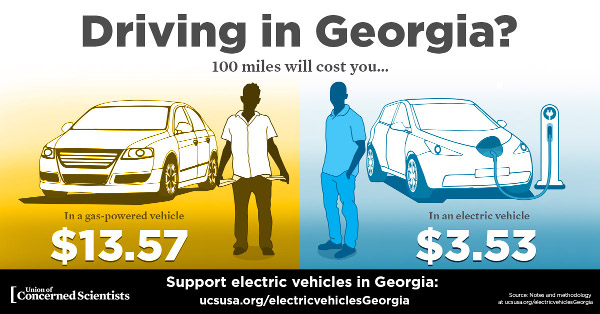 Are you thinking of buying a new car in the next year or so? Well, don't do so
just yet! Wait until there are a number of practical low-pollution autos on the
market at a reasonable price. The cost savings in gasoline fuel compared to
electrical usage is display by the illustration on the right side.
Attractive electric cars will be a real competitor to the hybrid and standard
fossil fuel autos. This article brings you information about the potential of
electric cars. Electric autos are the way of the future and these may help solve
our dependence on oil and maintain a clean environment.
Are you thinking of buying a new car in the next year or so? Well, don't do so
just yet! Wait until there are a number of practical low-pollution autos on the
market at a reasonable price. The cost savings in gasoline fuel compared to
electrical usage is display by the illustration on the right side.
Attractive electric cars will be a real competitor to the hybrid and standard
fossil fuel autos. This article brings you information about the potential of
electric cars. Electric autos are the way of the future and these may help solve
our dependence on oil and maintain a clean environment.
|
Update on electronic cars: The future of electric cars is here in 2016. As of September 2015, there are over 30 models of highway legal all-electric passenger cars and utility vans available for retail sales, mainly in the United States, China, Japan, Western European countries. By mid-September 2015, about 620,000 light-duty electric vehicles had been sold worldwide out of total global sales of one million plug-in electric cars sold since 2008. Wiki: electric car The future of electric cars depends on having a storage battery technology of large enough capacity to allow driving for at least 200 miles before needing a recharge. Electric energy source is not an issue. The technology for an electric motor has been available for over 100 years. The issue of connecting a cable from the car to the electrical outlet to recharge is being solved as a wireless option. There is also a support option for generating electricity from applying brakes while driving and depositing this energy into the electronic battery as a recharge. Can auto companies package all this technology in a manner to sell such a car under $ 30,000? China’s electric car market: is focusing on a 'pedestrian' electronic car [ golf cart size ]that would replace the fossil fuel cars in polluted cities. The electronic car would be a small low speed electric car or LEV that will be regulated to a top speed of 45 mph in cities with most air polluted cities. Tesla Motors in USA and battery company: Tesla will unveil on March 31, 2016, its pure electric Model 3 electric car that will travel for 200 miles on one battery charge and cost $35,000; mass production scheduled for 2017. Tesla is building a huge battery plant in Reno, Nevada. The mass production of batteries would bring the cost of electric cars down in the near future, making the electric car affordable for everyone. Furthermore, a Powerwall storage battery to store solar electricity in private homes is already available and should be in mass production by 2018. Mercedes Benz: has released news of building a “revolutionary” Mercedes vehicle and assembly plant to be completed in 2017 or 2018. This will be an all electric mid-size to large luxury vehicle, and will feature a lithium-ion battery that can be recharged two ways. The first option will be with a direct plug-in, and the other option will be a small dynamo like device that will charge the battery while the car is driving. In current tests, the battery was able to get 170 km (approx 105 miles) before it had to be charged again, which means that the dynamo itself can only partially recharge the battery. Mercedes Benz also reports that it is evolving technology to use a wireless system for charging an auto battery. Additional details are lacking as of March, 2016. Previously Mercedes Benz had developed the non-polluting B-Class F-CELL car that is available now. F-CELL technology drive converts compressed hydrogen—estimated to make up 74% of the known universe—into electricity. This electricity then powers an electric motor, delivering spirited performance and a range of around 190 miles, all while returning the equivalent of over 50 highway mpg and emitting nothing but water vapor. |
History of Electric Cars
Electric vehicles have been around for a very long time. In the early 1900s, there were more electric vehicles than there were gasoline-powered cars. But by 1920, the trend began shifting to gasoline powered autos.
The automobile companies have recently given us hybrids that run on both gasoline or diesel oil and electricity, giving us between 35 and 50 miles per gallon. An efficiency from 25 mpg to 35 or 50 mpg is not a significant improvement! These hybrids may emit less pollutants but their gasoline efficiency is deplorable.
Yes .... deplorable and insulting to our intelligence, since numerous non polluting cars were invented around 1900. These era autos, and especially Nikola Tesla's auto of the 1930's, were advanced for that time, were non polluting and had technology that should have been used by auto companies and engineers to develop electrical models before oil became a money maker and since the initial oil crisis of 1973. Sad to say, the energy crisis facing the world today could have been averted a long time ago.
There have been numerous inventions related to making the electric auto a real possibility. Here are just a few of these:
In the 1970's, an inventor used an Ev-Gray generator, which intensified battery current, the voltage being induced to the field coils by a simple programmer (sequencer). By allowing the motor to charge separate batteries as the device ran, phenomenally tiny currents were needed. The device was tested at the Crosby Research Institute of Beverly Hills, Ca.; result: a 10-horepower EMA motor ran for over a week (9 days) on four standard automobile batteries. Governor Ronald Reagan gave special recognition to this new electronic miracle.
The inventors estimated that a 50-horsepower electric motor could traverse 300 miles at 50 m.p.h. before needing a re-charge. The inventor, Dr. Keith E. Kenyon, of Van Nuys, California, discovered a discrepancy in the normal and long accepted laws relating to electric motor magnets. Dr. Kenyon demonstrated his invention for many scientists and engineers in 1976 but their reaction was astounding. Although admitting Dr. Kenyon's device worked, they saw little or no practical application for it!
The ultimate source for our electrically powered automobile would be to have an electric motor that required no outside source of power. Sounds impossible because it violates all scientific thought! But it has been invented and H.R. Johnson was issued a patent No. 4,151,431 on April 24, 1979 on such a device!
Howard Johnson invented a Permanent Magnet Motor. This new design, although originally suggested by Nikola Tesla in 1905, is a permanent magnet motor. Mr. Johnson arranged a series of permanent magnets on the rotor and a corresponding series - with different spacing - on the stator. One simply moves the stator into position and rotation of the rotor begins immediately.
The point being made is that technology to engineer electronic autos has been around for a long time. The incomplete history below supports this contention:
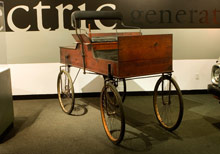 1.
Robert Anderson of Scotland built the first electricity powered automobile in
1832. It was slow and covered a short distance.
1.
Robert Anderson of Scotland built the first electricity powered automobile in
1832. It was slow and covered a short distance.
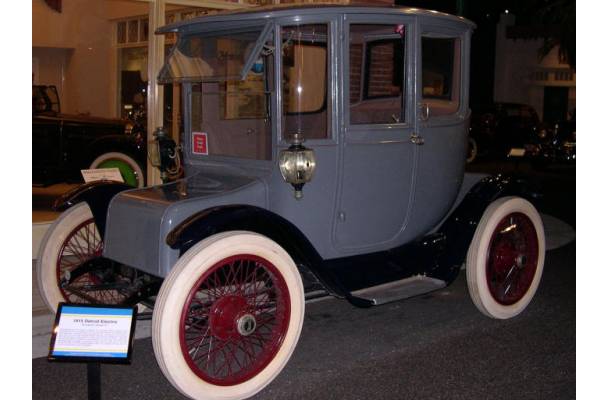
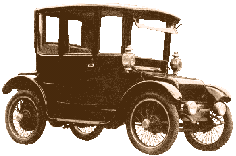 5. Rauch and Lang Electric Sedan was built around 1922 and had limited success.
Note: Most of these early autos, with the except of Teslas' 1931 auto,
could not reach speeds of 45 or 50 m.p.h.
5. Rauch and Lang Electric Sedan was built around 1922 and had limited success.
Note: Most of these early autos, with the except of Teslas' 1931 auto,
could not reach speeds of 45 or 50 m.p.h. 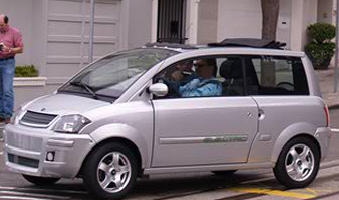 7.
Canada’s Zenn car: Update November 05,
2011: The dreams of Canada's Zenn car for 2009 disappeared when the
Toronto maker had difficulty getting the new capacitor battery from the Austin,
Texas, the battery maker. "The electric-powered car would have a top speed of
80 miles per hour, have a 250 mile range and recharge the battery in less than
10 minutes. The car would get its power from a new battery technology, called an
electrical energy storage unit (EESU), an ultracapacitor, developed by EEStor, a
company near Austin, Texas. Big feature in its operation would have been the
engine space, 1/10th of a typical internal combustion engine vehicle, and would
have being 100% emission free.”
Article about Zenn car is no longer active.
Article by Hamilton: New super battery is no longer active.
7.
Canada’s Zenn car: Update November 05,
2011: The dreams of Canada's Zenn car for 2009 disappeared when the
Toronto maker had difficulty getting the new capacitor battery from the Austin,
Texas, the battery maker. "The electric-powered car would have a top speed of
80 miles per hour, have a 250 mile range and recharge the battery in less than
10 minutes. The car would get its power from a new battery technology, called an
electrical energy storage unit (EESU), an ultracapacitor, developed by EEStor, a
company near Austin, Texas. Big feature in its operation would have been the
engine space, 1/10th of a typical internal combustion engine vehicle, and would
have being 100% emission free.”
Article about Zenn car is no longer active.
Article by Hamilton: New super battery is no longer active. 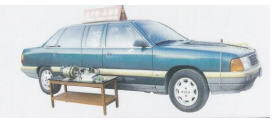 Chinese no fuel auto: The car could provide 188 horsepower and was
demonstrated in 2003. Inventor Dr. Liang got the Generator that used Intelligent
Chips and Integrated Circuits (ICs) to provide the pulse force. The Car requires
no fuel. Since this auto had difficulty climbing hills, the Chinese have
temporarily deferred marketing this vehicle at this time. The details could be
seen in the video AVSEQ01.DAT.
Article about Chinese no fuel car is no longer active.
Chinese no fuel auto: The car could provide 188 horsepower and was
demonstrated in 2003. Inventor Dr. Liang got the Generator that used Intelligent
Chips and Integrated Circuits (ICs) to provide the pulse force. The Car requires
no fuel. Since this auto had difficulty climbing hills, the Chinese have
temporarily deferred marketing this vehicle at this time. The details could be
seen in the video AVSEQ01.DAT.
Article about Chinese no fuel car is no longer active. There has been genuine consumer interest since 1930 for electronic autos while at the same time sabotaging efforts by energy giants. Here is a partial list:
1. In 1969, Joseph R. Zubris took his 1961 Mercury and pulled out the Detroit internal combustion engine. He then installed an electric motor as a source of power. His unique wiring system cuts the energy drain at starting to 75% of normal and doubles the electrical efficiency of the electric motor when it is operating! The U.S. Patent Office issued him a patent No. 3,809,978. Although he approached many concerns for marketing, no one really seemed to be interested. And, his unique system is still not on the market.
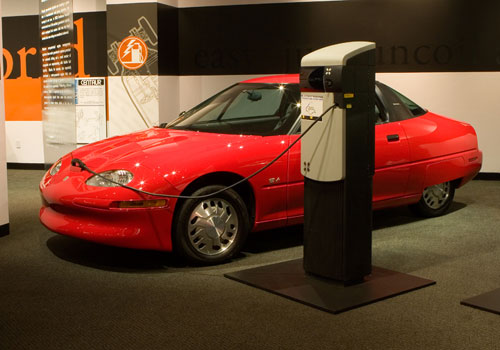 2.
Within the past decade two Richardson men, George Thiess and Jack Hooker,
claimed to have used batteries operating on magnesium from seawater to increase
the range of their electric automobile from 100 miles to 400 or 500 miles.
2.
Within the past decade two Richardson men, George Thiess and Jack Hooker,
claimed to have used batteries operating on magnesium from seawater to increase
the range of their electric automobile from 100 miles to 400 or 500 miles.
3. 1996 GM all electric car: The EV1 was the first modern production electric vehicle from a major manufacturer and was designed from the ground up to be an electric car. Only select dealers in California and Arizona were chosen to lease and service the EV1 and this coupe was the first to be delivered to Orange County. Impressed by its lively performance and civilized amenities, EV1 enthusiast Kris Trexler took it on a trip from Los Angeles to Troy, Michigan soon after taking delivery. Though he had to carefully plan his numerous “re-fueling” stops weeks in advance, Trexler was able to demonstrate the potential of electric power and introduce a large number of people to this rediscovered transportation technology. Article about GM auto 1996 is no longer active.
In 1996 electric cars began to appear on roads all over California. They were quiet, fast, produced no exhaust and ran without gasoline. Ten years later these futuristic cars were almost entirely gone. What happened? Article by Paine: no electric car is no longer active. But since 2015, there has been a revival of consumer and federal interest in green energy electronic autos. The general public now realizes that electronic autos will need electricity tyo charge the batteries, hence there is also interest in switching from dirty fossil energy plants to clean generating energy plants.
Advantages of utilizing electric power as a means of propelling vehicles:
Maintenance is absolutely minimal in an electric motor, for the only oil
required is for the two bearings in the motor and the necessary grease fittings.
There is no oil to change, no radiator to clean and fill, no transmission to
foul up, no fuel pump, no water pump, no carburetion problems, no muffler to
root out or replace and no pollutants emitted into the atmosphere.
It appears as though electric autos might be the answer we have been searching
for!
As pointed out by Lawrence Lseung of China in 2007:
|
Oil is no longer a strategic resource. There is no need to go to war over it. Modern Wealth is the quality and quantity of Meaningful Economic Activities. Such Activities can be infinite. Ignorance and poverty will be history. |
Need for more electricity:
But are electric cars cheaper to run than gasoline cars? Electric driven cars will need electricity as fuel and this is a hidden cost. If the car designers use a super-capacitor battery to store electricity, as several auto makers are currently attempting to doing, then there will be a real demand for more clean-green electricity. This demand for more electricity is a problem that would need to be resolved. This would be a trade off with less polluting autos and a cleaner environment.
However, super-capacitor battery driven electric autos may be a real possibility! Access to use free energy sourced engines to drive autos, as claimed by the Chinese, is already here. Tesla, in building their battery plant in Nevada, makes this dream that much closer.
Summary:
The electronic car is here. It has many advantages over the gasoline polluting auto. Look for the Germans, Chinese and East Indians to engineer a practical electrical auto that will meet USA standards. All the auto companies, since 2015, are competitively focusing on developing an affordable electronic car.
The big issue for electronic autos is the power source: power from free energy or power from the existing electrical system. This hassle between these two sources of power remains unresolved. Recharging batteries to power electric cars will get its electrical juice from the green power system, lessening the current global energy crisis.
You need to seriously consider buying the electric car of the future!
References:
Abrom Arthur, "The Forgotten Art of Electric - Powered Automobiles," Article by Abrom Tesla autos review is no longer active.
Detroit Electric car, Article about Detroit electric car is no longer active
Germano Frank, Article by Germano: electronic autos is no longer active.
Greene, A. C., “The Electric Auto that almost triumphed Power Source of '31 car still a mystery,” Dallas Morning News January 24th, 1998. Article by Greene: magic Telsa car is no longer active.
Hamilton, Tyler, “Better Batteries Charge Up, “ Technology Review, August 05, 2008. Article by Hamilton: New super battery is no longer active.
Kendall, Leslie, “ALTERNATIVE POWER: Lessons from the Past, Inspiration for the Future,” Petersen Automotive Museum, Los Angeles, Ca.. Article by Kendall: Car history is no longer active.
“Now a scooter that runs on magnetic power,” Kearla India News, June 14, 2007. scooter no gasoline
Paine Chris, "Nozzlerage: Who took electric cars off the road?" Article by Paine: no electric car is no longer active.
Tseung Lawrence, “Cosmic Energy Machines, Lee-Tseung, Lead Out theory, “ PDF,V3, October 25, 2007.] Article by Tseung: Cosmic Energy machines is no longer active.
Wikipedia, "Elevtric car." Wiki: electric car
Wilson Tracy V., “ How Wireless Power Works,” How Stuff Works, Wilson: wireless power airplane
Zenn car, Article about Zenn car is no longer active.
Some basic observations concerning magnets:
Why EV Failed:
The electric automobile could not be adapted to accommodate and utilize a polyphase motor (i.e. A.C. power). Since they used batteries as a source of power, their extinction was sealed. No battery can put out an A.C. signal. True, a converter could be utilized (i.e. convert the D.C. signal from the battery to an A.C. signal), but the size of the equipment at this time was too large to fit in an automobile - even one with the generous dimensions of this era.
Nikola Tesla - The Forgotten Genius," Life technology. Article about EV failure is no longer active.
So, somewhere around 1915 or so, the electric automobile became a memory. True, United Parcel Service still utilizes several electric trucks in New York City today but the bulk of their fleet of vehicles utilizes gasoline or diesel fuel. For all intensive purposes, the electrically powered automobile is dead - they are considered dinosaurs of the past.
Documentary movie "Who Killed the Electric Car?" had its world premiere at the 2006 Sundance Film Festival and has received excellent reviews. Sony Pictures Classics released the picture to theaters nationwide on June 28, 2006.